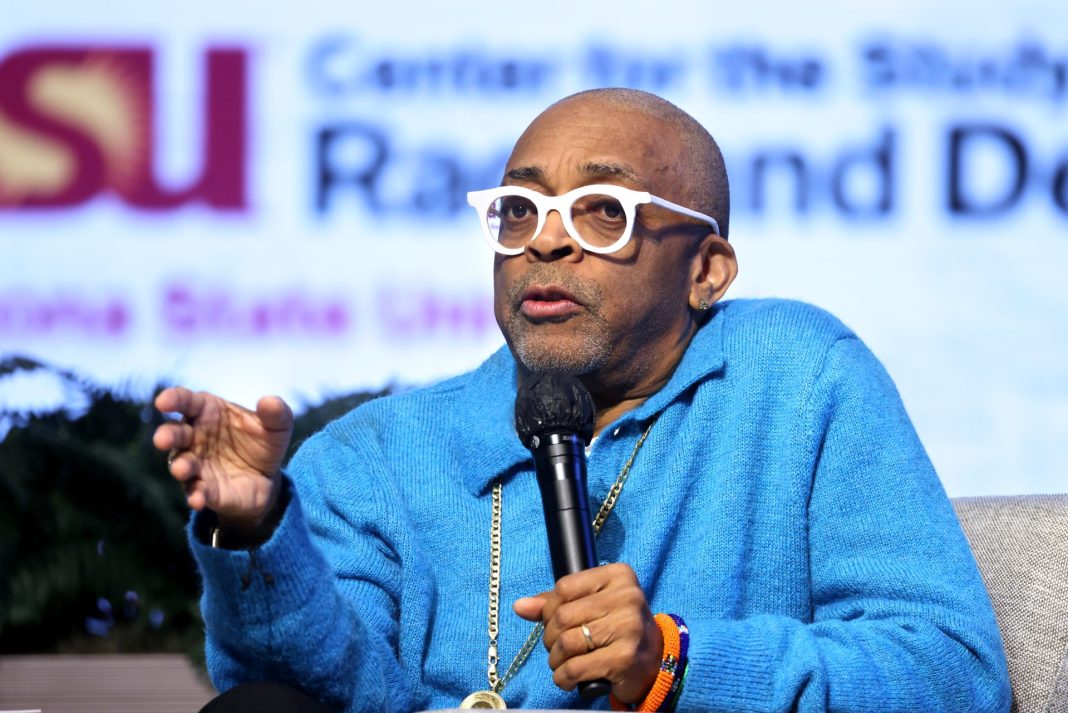There is no reason why a remake should remain inferior to its source material; even less so when it’s a ‘reinterpretation’ by an auteur as opposed to a cynical scheme for studios to cash-in on audience’s nostalgia. Ali: Fear Eats the Soul (1974) comes to mind: Douglas Sirk’s Hollywood melodrama All that Heaven Allows (1955) provided Rainer Werner Fassbinder with the template he needed to explore Germany’s own prejudices and social divisions, while also allowing him to comment on the ability of (American) pop-cinema to bring us closer to simple emotional truths. Unfortunately, no such sensitivity or consideration seems to have gone into Spike Lee’s decision to reinterpret Akira Kurosawa’s masterly High and Low (1963). For most of its runtime, Highest 2 Lowest struggles to provide a reason for its own existence.
We begin with a superficially similar set-up of Kurosawa’s now classic dilemma: a wealthy but principled businessman, who has just risked everything he owns on a deal to regain control over his company, receives a phone call demanding a ransom for his son. It quickly transpires that the kidnapper has made a mistake and is holding hostage his chauffeur’s son instead, but he demands the payment anyway. Our businessman, Gondo Kingo in Kurosawa’s original and David King in Lee’s latest film, faces an internal struggle: does he pay and lose all his wealth or leave a child to face death?
It is not needless showboating when the first 40 minutes of Kurosawa’s film take place within a single location, the living room of Gondo’s modernist house, in long takes staged in deep space. We are invited as witnesses to a theatrical display of human passions and resentments emerging under excruciating pressure. Class differences, normally ignored, are brought to the surface, and the actors’ entire bodies define their characters. We see the way the chauffeur is relegated to secondary status, a strict social hierarchy forcing him to remain silent even as he longs for his son’s freedom, by observing him hovering, hunched over, in the background of the action. Equally, we witness the insecurity of the nouveau riche in patriarch Gondo’s abrupt dismissals of his wife’s feminine insight, his eyes seething with resentment as he remembers her socially superior upbringing.
With Lee, clumsy exposition informs us of the thematic issues he wants to explore – authenticity in the age of AI, amongst others – and each line of dialogue sets up a ‘problem’ which we already know will be resolved in the film’s course. By the time we get to the phone call informing us of the kidnapping, the dialogue has divested us of the possibility of seeing these characters as humans in a sympathetic plight and we watch with near disengagement. Lee’s visual touches also alienate and encourage us to emotionally withdraw at crucial points. They evoke security cameras or occasionally, replaying moments of human connection from various angles, sports broadcasts. Formally the complement to the story’s themes of 21st century digital paranoia and the way that all human action now takes place under the weight of virtual judges is obvious, but never explored satisfactorily. Ironically, this is because Lee struggles to establish a physical sense of space into which these anonymous bodiless online presences can permeate. The King family home never once feels threatened in the way that Gondo’s house atop a hill is endangered by the watchful eyes of the lower classes living below him.
It is fascinating to read Joan Mellen’s 1975 interview with Akira Kurosawa in which her understanding of High and Low, which in its second half transitions to a proto-police procedural where the law attempts to capture the kidnapper, is contrary to the filmmaker’s own. Kurosawa did not see the police as heavy-handed in their pursuit of him (he saw the criminal’s actions against a child as truly abominable) and did not want to make him sympathetic, but acknowledged that in the act of directing that was how it came together. The power of Tsutomu Yamazaki’s performance as the doomed Dostoevskian antagonist, cut off from charity and determined to hate, cannot help but transform in the film’s final minutes what has been a mysteriously sun-glassed visage for much of the runtime into an image of the despair to which a materialistic society can drive anyone. His scream of horror and the descending metal shutter are the final sounds we hear before the screen fades to black. Kurosawa goes on to confess that he cut a sequence it took two weeks to complete, in which the kidnapper is analysed by Gondo and the police chief, so that this would be the shot with which we are left.
Lee, however, wants to be in control and dictate to the audience what they can and cannot believe. This obviates the more interesting visual ideas, particularly an inspired rap number, in which fluorescent lighting plays across kidnapper Yung Felon’s and King’s faces alike, as King grins and a split screen unites them. The heavy-handed writing returns to rescue us from the notion of Felon as King’s own shadow, differentiated by status alone, making these moments little more than a trace left behind by a superior work. When we end with David King, a multimillionaire back in his penthouse, angry that the kidnapper from the ghetto did not receive an extra five years on his sentence, imagining his future business success, and with every cut effacing irony to solidify the audience’s support for him, we are not only watching a film completely opposed to Kurosawa’s, which showed Gondo achieving spiritual enlightenment after renouncing his wealth, but a film which celebrates a world which Kurosawa, in his humanistic plea for mercy, condemned.


